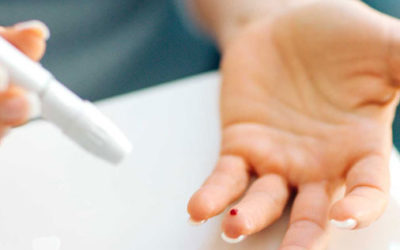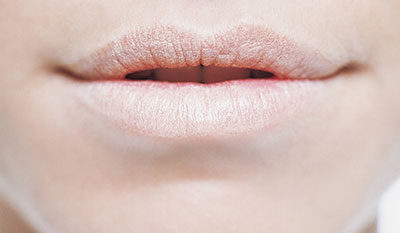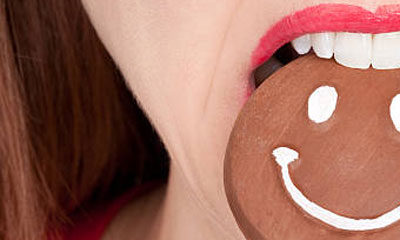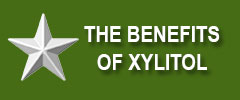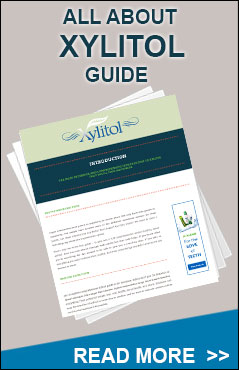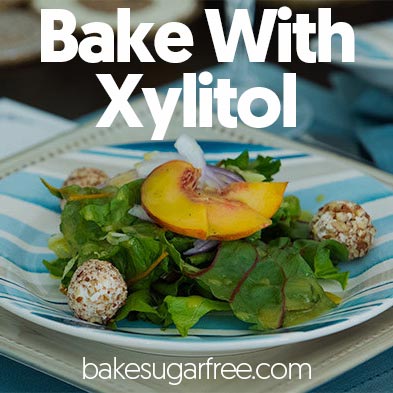Dental Benefits
There is no better way to begin addressing this than to look at Kauko Makinen’s work. He has been looking at xylitol and tooth decay from the beginning with the Turku sugar studies. Here is what he wrote this week (September 4, 2016) as an introduction:
Most novices want to know what xylitol is. In my interviews all over the world government authorities are always asking some basic questions first. In a nutshell that can be opened in about three minutes:
☺Xylitol is a natural carbohydrate-like sweetener. It occurs everywhere in the plant kingdom (such as fruits and vegetables), microorganisms, animals (including humans), but the amounts are lower. Therefore, xylitol is currently manufactured from various plant materials such as birch, corn, and the like, converting the wood sugar (xylose) that is present in those materials, into xylitol. This xylitol is EXACTLY the same as natural xylitol.
☺ Xylitol is as sweet as regular table sugar. It tastes like sugar with a pleasant cooling effect.
☺Xylitol is suitable for diabetic subjects (the metabolism of xylitol does not require insulin). The very first uses of xylitol in the world concerned its usage in diabetic nutrition (in the 1960s, after which the dental benefits were discovered in early 1970s).
☺ Xylitol provides only about 2.6 kcal per gram compared with the about 4 kcal/g that we obtain from regular sugar. Thus xylitol is a low-calorie natural sweetener.
☺ It is all right for orthodontic subjects to use xylitol (if not gum, at least troches and similar). In most countries orthodontic patients use xylitol gum, since manufacturers have made gums that do not stick to appliances. Elderly subjects benefit from xylitol’s moistening effect that prevents dry mouth.
☺ Many ask how xylitol works. My simple answer is normally as follows: Xylitol does not form acids. Xylitol reduces the growth of the most important dental pathogen, Streptococcus mutans. This bacterium is a risk factor. Xylitol reduces the amount of dental plaque (dental biofilm). Dental plaque is a risk factor in caries development. Xylitol may also reduce the growth of some other oral bacteria. Xylitol helps prevent oral malodor and helps perio patients, too
In 15-minute briefings I have selectively focused, for example, on the following issues:
● The first xylitol chewing gum was launched in the U.S. already in 1976. (Finnfoods, located at that time in New Jersey, was a sales office of the then Hellas, Turku, Finland, confectionary company, a subsidiary of the Huhtamäki concern operating in Helsinki, Finland. Finnfoods sold the first US xylitol gum that was made in Finland).
● Xylitol is currently used all over the world. Various government agencies and other public bodies in several countries have endorsed xylitol and recommend it as part of dental caries prevention efforts. (The Medical Principles and Practice paper, vide infra, contains abridged information on these issues. The article involved is publicly available from all scientific libraries. Table 7 on p. 315 of this paper lists public institutions, regulatory bodies, and professional organizations that have endorsed or recommended the use of xylitol chewing gum in caries prevention in various countries.)
● Safety of xylitol. The FDA has approved xylitol already in 1963 as a dietary supplement. In 1986, The Department of Health and Human Services released a statement on the safety of xylitol (“Health Aspects of Sugar Alcohols and Lactose“, Report prepared for Food Safety and Applied Nutrition, FDA, Contract no. FDA 223-83-2020; Life Sciences Research Office, FASEB, Bethesda, 1986.)
● One of the latest FDA stands regarding the cariogenicity of sugar substitutes, including xylitol, can be found in Federal Register (Vol. 61, No. 165) in 1996. Xylitol was regarded as a potential sugar substitute.
● The Department of Public Dental Health Sciences of the University of Washington has published during the last years several papers that support the use of xylitol in caries prevention. Dr. Peter Milgrom has been in charge of those studies. Also certain other U.S. Dental Schools have been active in this sense. I believe you may know those institutions.
● Xylitol is currently available in the U.S. in dozens of confectioneries and oral hygiene adjuvants aimed at reducing caries incidence.
● Several scientific studies that support the use of xylitol in caries prevention have been carried out also at the University of Michigan (during my tenure there).
● There are currently more 700 published papers reporting on various odonto-stomatolocical studies with xylitol and the number is increasing steadily.
In summary, safety and efficacy would be my viewpoints that I would emphasize. Another point is that xylitol is relatively well known in the U.S. among health-conscious consumers.
Publications that support the advantageous cost/benefit ratio of xylitol administration in caries prevention:
I Selected general literature support
1. Peldyak J, Mäkinen KK (2002). Xylitol for caries prevention. Journal of Dental Hygiene 76:276-284.( Relevant background information for everyone.)
2. Jones L (2010). No more allergies, asthma. or sinus infections. Freedom Press, LLC. www.freedompressonline.com ISBN 978-1-893910-88-1 (Important medical information.)
3. Mäkinen KK((2011). Sugar alcohol sweeteners as alternatives to sugar with special consideration of xylitol. Medical Principles & Practice 20:303-320. (Provides a literature review that also discusses public endorsement of xylitol world-wide.)
4. European Union-Accepted Health Claims for Sweeteners.
This may be helpful. Accordingly, consumers should be able to make their food choices based on reliable and accurate information. The European Food Safety Authority (EFSA) has been influential in establishing the currently accepted health claims on sweeteners used in sugar-free chewing gums (SFCG). The sugar replacers currently permitted in EU-approved health claims for SFCG include intense sweeteners (such as aspartame and sucralose), erythritol, xylitol, sorbitol, mannitol, maltitol, lactitol, isomalt, polydextrose, D-tagatose, and isomaltulose. For SFCG, Article 13.1 contains three claims related to tooth mineralization, neutralization of plaque acids, and reduction of oral dryness, and a fourth claim for SFCG with carbamide concerning neutralization of plaque acids. Article 14.1 enounces a “plaque reduction” claim for gum sweetened with 100% xylitol. Two other claims for xylitol-containing SFCG relate to neutralization of plaque acids and reduction of tooth demineralization. The current EU-based legislation allows manufacturers to make claims for 100% xylitol gum to “reduce the risk of tooth decay”. The use of SFCG in medical and oral physiologic tests has become popular. Table-top sweeteners and foods formulated with sugar replacers are useful in achieving healthier diets in relation to overall carbohydrate and energy intake. This is important considering the increasing prevalence of diseases such as dental caries, obesity, and diabetes.
This issue has recently been discussed in Mäkinen KK (2014): Authorised EU Health Claims for xylitol and sugar-free chewing gum (SFCG). In: Foods, Nutrients and Food Ingredients with Authorised Health Claims (Sadler MJ, ed.). Woodhead Publishing, Cambridge, U.K. Vol. 1:151-176.
5. The International Association of Paediatric Dentistry (IAPD is a non-profit organization founded in 1969, and currently includes 64 national member societies. This organization has published the following resolution: “Policy on the Use of Xylitol in Caries Prevention which is intended to assist oral-health-care professionals make informed decisions about the use of xylitol-based products in caries prevention”.
6. The American Academy of Pediatric Dentistry (AAPD) has recognized the benefits of caries prevention strategies involving sugar substitutes, particularly xylitol, on the oral health of infants, children, adolescents and persons with special health care needs (referenced as follows: Clinical Guidelines (2011). “Guidelines on Xylitol Use in Caries Prevention”, Council on Clinical Affairs, The American Academy of Pediatric Dentistry, Reference Manual 34(6) 12/13:166-169).
7. A comprehensive review on the public endorsements of xylitol world-wide appeared in 2006 in the Finnish Dental Journal (Vol. XIII, Suppl 1, pp. 66-75), as a result of the 2nd International Xylitol Symposium held in Beijing, China, October 14-15, 2006. In the U.S., at least Dr. Peldyak has access to the Symposium Proceedings. It is unfortunate that this review was published in a national dental journal and not on an international forum. Although the information contained in this paper is about 10 years old, most of the information shown is still valid.
II Cost/benefit ratio
It is true that Pentti Alanen has been investigated the cost/benefit aspects of xylitol usage. However, he acted in these studies as a supervisor of an academic dissertation (of Dr. Marja-Liisa Laitala) that was published in Finland (in English) as part of the Turku University Annales Universitatis Turkuensis series in 2010. This was a mother-child trial. Excerpts:
● The children who had not been colonized by mutans streptococci (MS) at 2 years of age maintained their primary teeth as caries-free 3.4 years longer (p<0.001), had significantly lower caries experience in their primary teeth until 10 years of age, and needed less restorative treatment (p = 0.005) in their primary teeth until 10 years of age than MS-colonized children.
● With the lowest MS colonization figures, the children in the xylitol group had lower figures in caries experience and number of restorative treatment visits than the comparison groups.
● The costs of the maternal prevention program with xylitol chewing gum were 116 euros; thus the costs for each additional caries-free year in the child were 37 euros. The prevention of MS transmission reduced caries occurrence figures in assumed high-risk children to the same level as the average figures for the whole age cohort.
● The maternal use of xylitol chewing gum in children’s caries prevention might be cost-effective when the xylitol chewing gum is purchased in large wholesale amounts by the public dental care.
Please recall that in these studies the mothers used xylitol, not the children.
III Caution
Some legislators may be aware of the recent Cochrane Review entitled “Xylitol-Containing Products for Preventing Dental Caries in Children and Adults” (Riley P et al. 2015, Cochrane Database Syst Rev 3:CD010743. The Cochrane Library 2015, Issue 3). This review is overly negative regarding xylitol. The review compares apples with oranges. The Cochrane reviews are generally highly valued and often provide thoroughly analyzed information on research papers in a particular scientific discipline. In this case, however, the opposite was true.
It is possible that the Cochrane editors were aware of the shortcomings of the text, but I am doubtful. My personal stand is that these editors were not fully informed about the multi-faceted research carried out on xylitol, and about the shortcomings of the review of Riley et al. Such systematic reviews are normally conducted according to a widely recognized handbook.
As far as I understand, no English-language criticism or rebuttal towards this Cochrane Review has been published. I have been contemplating this situation for some time and finally wrote a chapter entitled “Comments on a Cochrane Review” which I incorporated into a manuscript that generally discusses the use of xylitol and erythritol. This review will be published in an American peer-reviewed journal ( Journal of Food: Microbiology, Safety & Hygiene) hopefully later this year. We cannot refer to this text of mine until the paper is hot-off-the press. In that text I provide detailed criticism towards the Cochrane Review that indeed contains several errors, wrong conclusions and erroneous generalizations. I’ll let you know when this text can be used (in case anybody really needs it in the U.S.!).
I always point out how expensive cavity filling is. Further problems arise by absences from work or school, or the pain people may suffer from when their teeth ache. I finally stress on the ethical part of all cure: by offering xylitol as an alternative, we want to improve the quality of life!
Because of shortage of time, I was not able to locate all of the information that was in my mind. I’ll let you know if I find more support for you.
Best luck!
Kauko K. Mäkinen
Xylitol production by Ca-alginate entrapped cells: comparison of different fermentation systems
W Carvalho, SS Silva, JC Santos, A Converti – Enzyme and Microbial Technology, 2003
Candida guilliermondii cells were entrapped in Ca-alginate beads and used for xylitol production from concentrated sugarcane bagasse hemicellulosic hydrolysate in three different fermentation systems, namely 125-ml Erlenmeyer flasks (EF), 2.4-l stirred tank…Learn more…
[This article has to do with newer and exploratory methods of producing xylitol using yeast cells. It would be better than the chemical
processes we use now, but it will take time to get there.]
The next step in infectious disease: taming bacteria
AH Lon’Jones – Medical hypotheses, 2003
Except for immunization programs our warfare with bacteria has always been a frontal assault with antibiotics. In this warfare we win battles, but with every new battle the enemy gets stronger. We need other options. Recent experience suggests two alternatives. First,…Learn more…
[This article presents the idea, originated by Nathan Sharon, that we can ‘talk’ to bacteria by using the sugar complexes that are on our cell surfaces. We have been in a war with microbes since we learned of their existence two centuries ago and we are losing. When we lose battles in other areas we think of negotiating and now we can do that with bacteria. This is a very good idea because in the last twenty years we have learned that we are made up mostly of friendly bacteria that we need to help and promote rather than kill off when we take an antibiotic for another condition. Xylitol seems to do this: it doesn’t kill bacteria; its message is something like ‘shape up or ship out’, and they do]
More links to research with the oral and especially the nasal uses of xylitol can be found at www.nasal-xylitol.com.
Related Articles
Indoor air pollution solutions
Breathing Easy Indoors By Jane Wooley. Think pollution is all about filthy air outdoors? You’d be wrong. In recent years, more and more scientific evidence has shown that it’s actually the air inside our homes and buildings that are the most seriously polluted....
Keep your Nose Clean
by Jane Sandwood Every day you breathe up to 30,000 times. Now imagine you’re breathing in polluted air. When we think of toxins in the air, we immediately think of our lung health. But your nose is the first organ that has to deal with polluted, harmful air. Even...
What is Xylitol?
What is xylitol? Well it is pretty amazing, if we do say so ourselves. It is an alternative sweetener that has been popular in food products since the 1960s. On top of being a sweetener, it has shown to have a significant reduction in cavities when used...
Is Xylitol Good for Diabetics?
Let’s first talk about what xylitol is. Xylitol is a sugar alcohol. The suffix “itol” is how you can most often identify a sugar alcohol. Ironically, sugar alcohols are neither sugar nor alcohol. They are basically water-soluble solids found in plants and...
How to Relieve of Dry Mouth with Xylitol
What is Dry Mouth and What Causes It? Dry mouth is caused by the salivary glands in the mouth not performing properly, or, more commonly, by mouth breathing secondary to nasal congestion. Poor salivation can be caused by medications, cancer treatments,...
Prevent Tooth Decay with Sweets
Did you know your sweet tooth could actually make your dentist happy? And we don’t mean because you’ll be paying them to fix your cavities, we mean, you could stop having cavities. It’s true; a sweetener can be the answer to your dental health problems. Xylitol is a...


